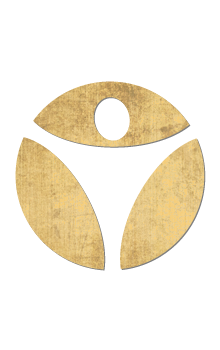A Guide for Inflexible Guys to Working Out with Yoga
- Updated on: December 27, 2021
Beginner’s Yoga Workouts For Men

Did you know that yoga can be a great workout? Whether you are just starting out or have been practicing yoga for years, the dynamic movements of the practice can be beneficial for everyone.
The problem is that there is a common misconception that yoga is typically more for women than men. This is absolutely incorrect and solely a stereotype. In reality, yoga is for everybody of any gender, ability, size, age, etc.
At the same time, if you are a guy new to yoga, you might have some questions. Are you wondering the best way to get started? Wondering if there are certain poses or classes that are more suited to the male anatomy?
Wondering how can you use yoga as a workout?
In this article, we will look into how to start your yoga practice and how beginner’s yoga workouts for men and women alike can be a great way to stay in shape.
Why Men Should Do Yoga
So, why should men be doing yoga? Or better, why would they not be?
There is no one gender or type of person that yoga is meant for. Yoga is for everyone.
However, there are specific benefits that yoga offers, and they might differ slightly depending on the person, their prior experience, and even their gender.
Let’s take a look at specific benefits that yoga has to offer for a males:
Strength- Many men tend to practice strength training quite often. Men, on average, naturally have more muscle mass than females. Yoga can actually help to enhance a strength training practice by increasing mobility in the body as well as further defining muscle and focusing on the smaller muscles that often get overlooked when strength training. Yoga also helps to increase oxygen in the body through breathing exercises, and this can be a very useful skill to have when strength training.
Flexibility and Mobility- Male bodies are naturally less flexible than female bodies. We will look more into this later in the article to learn about why this is. Yoga can increase flexibility, opening up tight muscles, and making other exercises more accessible. By increasing mobility you can decrease pain and discomfort from tight fascia.
Stress Relief and Emotional Health- In society, many men feel they can not express themselves or be sensitive. This is a problem, preventing many males from feeling comfortable with their emotions. Yoga creates a space where feelings can be safely felt, where thoughts can be examined, and where there is no judgment. This encourages people to be more secure in who they are and what they feel.
Can Yoga Be Used as an Exercise?
Yoga can be a great exercise. In fact, many do not realize just how much yoga keeps you up and moving. Your yoga practice can be integrated into your regular workout routine.
As a Gentle Exercise for Beginners- If you are new to working out and want to ease yourself into it, gentle yoga can be a great way to start moving your body without much strain, and then you can work your way up from there.
As a Practice for Rest Days- If you exercise often and do a lot of strength training and/or cardio, yoga can be a great practice to do on rest days to give your body a break while keeping you moving.
As a Strengthening Exercise- For those who workout more often and can keep up with a more intense class, doing yoga with the goal of strengthening muscles is definitely possible. With classes like Power Yoga, you can actually increase your muscle strength, especially in the areas that are not paid attention to during strength training.
Benefits of Yoga as a Workout
Now, let’s take a look at some benefits of yoga as a workout.
Strength- While yoga can help enhance your strength training routine, it can also help to strengthen the body on its own. When you strength train, there are very specific muscles that are often worked with. Yoga helps you to keep all of your muscles in shape by targeting the muscles that are often overlooked. While it might not necessarily build muscles in the same way as strength training, it will still help to define your muscles and keep them strong.
Flexibility- Having more flexibility allows you to be able to do more when it comes to movement. While you do not have to be super flexible to do yoga, yoga will naturally increase your flexibility the more you practice. This ensure that your other exercises and routines become safer to do and more accessible. When the soft tissues of the body are more flexible, you are less likely to pull a muscle or get hurt by over-extending. Working on your flexibility helps to decrease the risk of injuries and pain, allowing you to confidently keep yourself up and moving.
Pain Relief- Do you have chronic pain or a past injury that just does not seem to go away? Just can help with pain relief by releasing thigh muscles and strain in the body, correcting posture, and opening up the fascia. When you have less pain, it becomes easier to stay mobile, enhancing your entire exercise routine. For this reason, yoga can be a great addition to your routine, or it can be your main source of exercise.
Balance- Balance is obviously important in all aspects of life. Through specific yoga poses, like warrior III or dancer’s pose, one’s balance can be increased. With better balance and coordination, other exercises, such as deadlifting, becomes more acceptable. This is helpful when approaching other exercises in order to have more stability when doing things like dead lifting which requires more balance. In addition, as we get older, our balance naturally decreases from changes in joints, posture, and so much more. Strengthening your balance ahead of time can help to avoid this as you age, giving you more control over the body, and decreasing risks of falling.
Breath Control- Understanding different ways of breathing can be especially helpful. These techniques are often included in a yoga practice and can be used within other exercises as well. You might try deeper breathing during cardio or more controlled breathing when strength training. Learning about the proper ways to use your breathing can be a great way to enhance your fitness routines in general.
Best Types of Beginner’s Yoga for Men and Women Who Want a Workout
Are you ready to begin your yoga practice? Do you want to learn how to use yoga as an exercise?
If so, where should you start? What is the best form of yoga for exercise for beginners?
Flow Yoga with More Movement- For a practice that involves linking movements with the breath to flow from one pose to the next, try a vinyasa flow. Vinyasa yoga is one of the most common forms of yoga to do. It is great for movement and breath control without spending much time in just one pose. This adds a little bit of cardio to your practice, keeping you moving the whole time. If you want a similar practice that is more repetitive, you might try ashtanga yoga which involves repeating specific sequences again and again.
Yoga for Strength Building- If you are looking for a more intense yoga practice that strengthens muscles, try power yoga. Power yoga is a more intense version of vinyasa, holding each pose for longer to really gain muscle mass and strength.
Body By Yoga Programs for Exercise- If you want to try out our practices, you will find that they involve a mix of types of yoga. We like to call our yoga classes slow burn power yoga. Each pose is held for long and we do not flow as fast from one pose to another. If you like ashtanga yoga but not the repetition, our practices are a good option. If you enjoy vinyasa yoga but not moving quickly through the poses, our yoga classes will offer you time to experience each pose and hold it, building your strength and endurance.
Is Yoga Different Depending on Gender?
Does gender affect yoga and how you practice it?
Yoga will often be the same no matter what gender is doing it, but some poses might be harder or easier depending on the person. For males, certain poses might not be as easy to do based on levels of flexibility. However, the same can be said for anybody with less flexibility.
How flexible you are depends on your gender, your hormonal levels, your genetics, your past injuries and scar tissue, and so much more!
Since women in general are more flexible, some poses might be easier than others for them. The good news is that even if a pose is not easy to do, there are props and modifications that can be used to adjust your practice.
So, while gender might affect how you practice and modify your yoga class, it should not affect which practice you do.

Are Women More Flexible Than Men?
On average, females are naturally more flexible than males. This, however, is not always the case for everyone. Flexibility varies person to person, but in general, women are more likely to be flexible than men. (Gołaś, et al.)
This is not a bad thing, just an average, and it is not the case for everyone. Each person should work with their own level of flexibility and not try to force themselves deeper into a pose.
So, why are women generally more flexible than men? What affects flexibility?
Each person should work with their own level of flexibility and not try to force themselves deeper into a pose.
So, why are women generally more flexible than men? What affects flexibility?
Connective and Soft Tissues- The connective tissues of the body– such as cartilage and lymphatic tissue– are naturally stretchier in females. These same tissues can also shift when a woman becomes pregnant, making it easier for the body to be able to go through changes. Soft tissues– such as muscles, ligaments, tendons, and fascia– are also naturally more flexible in women.
Hormones- Our hormones can affect how flexible we are. Estrogen naturally makes women, or people with higher estrogen levels, more flexible. For males, who have much less estrogen, flexibility is not always quite as accessible,
Hips- Female’s hips widen when they are pregnant to make room in preparation for birth. Because of this, their hips are naturally more mobile and flexible, making certain poses easier.
Muscle Mass- Men naturally have more muscle mass than women. The stronger muscles are without practicing stretching, the less flexible they are. Since male’s bodies have more muscle mass, it makes sense that they would have less flexibility.

What are the Differences in Anatomy for Men and Women?
Besides flexibility, what are the differences in anatomy between men and women?
Strength- As we just learned, men naturally have more muscle mass. This means that they, in general, are naturally stronger. While this does decrease flexibility, making some poses harder, it also makes poses that require strength more accessible.
Body Fat Percentage- In general, women naturally have higher body fat percentages than men. This is due to estrogen levels which can affect the metabolism. Estrogen and testosterone can also define where fat is held within the body. This is why females are naturally curvier than males. (Blair, 2007)
Height and Limb Length- Our levels of estrogen and testosterone affect how tall we are. Men are naturally taller on average and have longer limbs for the same reason, but this also depends on genetics and posture.
Muscles- As we have learned, males naturally have more muscle mass than women. This is due to testosterone. This is the reason men practice strength training more often and are able to easily build muscle.
Which Poses are Typically Harder for Men to do Than Women?
Godess Pose
Since this pose involves a lot of stretching of the hamstrings, hips, and groin, it can be harder for men to do. To try this pose, you would start by standing tall and stepping your feet out to the sides about four feet apart from one another. From here, keeping your posture aligned, you would turn your toes out to the sides and bend your knees so that they create ninety-degree angles. You would then relax your shoulders down the back and bring your hands together at heart center. Another option would be to bring the arms straight above you or out to the sides with the elbows bent. This is a great pose to hold for at least five breaths. Inhale to come back up and exhale the feet back together.
Eagle Pose is one of the more difficult yoga poses to do. For men, this pose becomes even harder since it requires a lot of flexibility in the hips, groin, hamstrings, legs, and shoulders. To do this pose, you would start in a standing position and then, on an inhale (if starting with the right leg), you would bring the right leg up and cross it over the left thigh on an exhale. You would have the option to cross the leg all the way around, bringing the toes towards your shin, or you can stay here. Next, you would wrap the arms around yourself with the left arm over top. You could stay there or you could take the arms all the way around, bringing the hands together. On an inhale, you would keep your spine long, and on an exhale, you would bend into the knees, dropping the hips back. This is a great pose to hold for a few breaths. Inhale to come back up and exhale to unwind. Repeat on the opposite side.
This is a great pose for hip flexibility and mobility, but for the same reasons, it can be harder for males than females. Men generally have less flexibility in their hips. Pigeon pose involves deep stretches in the hips and hamstrings, so for those who are not very flexible in the hips and thighs, modifications for this pose might be necessary.
This pose is usually done by starting on the hands and knees. If starting on the right side, you would bring your right knee towards your right wrist and your ankle towards your left wrist, keeping your foot flexed. From here, you would slide the left leg back behind you, resting the top of the foot and the thigh on the ground. If this was too intense, using a block or bolster under the left hip can support you and take tension out of the joints. This pose is good to hold for a few breaths before switching to the other side. Never force yourself deeper into this pose. It is important to take your time coming into it and working with your level of flexibility. Allow yourself to become more aware of your body here to see what works best for you.
This is a great pose for strengthening the arms, chest, core, hips, back, and legs, however, for those who have tighter hamstrings, Downward Facing Dog pose might be more difficult. Since males naturally have tighter hamstrings, downward facing dog can be harder to do.
This pose is usually done by starting on the hands and knees and tucking the toes. From here, you would lift the knees up and press the hips up and back, using the core to hold you in place. If you can not keep your back long here, you can keep a bend in the knees to keep your spine stacked. If this is too difficult and you need more support in the legs, try using a block between the thighs here to keep the muscles engaged. Hold this pose for at least five breaths or as long as you would like.
Tree Pose
For those with less hip flexibility, tree pose can be more difficult. Usually, tree pose is done by stepping one foot into the center and taking your other foot to your shin or thigh. If this is not doable, you can also bring your heel to your ankle with the toes resting on the ground. If you need more balance here, you can hold onto a chair or rest your back against a wall. Your hands can be up above you, out to the sides, or at your heart center. Hold this for at least five breaths and then switch sides.
Bound Angle Pose (Butterfly Pose)
While this pose does not seem very difficult, it involves a lot of flexibility in the hips and mobility in the legs. This pose is done by sitting on a mat with your feet flat together and your knees out to the sides. From here, you can either stay sitting up or fold forwards over the feet. Never force the knees down to the mat. If you want to deepen the pose, bring your feet closer in towards the body. To make the pose more gentle, press the feet further away. If you need more support here, you can place blocks under the knees. Hold this pose for about a minute.
Open Face Cow Pose
This pose can be rather difficult for anyone who is not very flexible. However, when done correctly, this is a great pose for strengthening the shoulders while creating more mobility in the hips. To do this pose, sit on a mat with your feet out in front of you. First, cross your right foot over to the outside of your left hip, keeping your right knee bent with the foot flat on the ground. Then, if you can, tuck the left leg beneath the right., bringing your left foot towards the outside of your right hip. If you can not easily do this, keep your left leg straight in front of you with the foot flexed. Now, on an inhale, bring your right arm up, and on an exhale, bend the elbow to drop the forearm down the back. On your next inhale reach your left arm down by your side and bend your elbow to reach the forearm up, bringing the hands towards one another. If you can not easily touch the hands together, feel free to grab onto your shirt to hold the arms in place. You can also use a strap here to hold onto with both hands. Hold this pose for about five deep breaths or as long as you would like. Inhale to unwind the arms and exhale to bring your legs out in front of you. Then, switch sides.
How to Start a Yoga Practice at Home VS in a Class
Starting a new yoga practice can feel intimidating, but it can be very beneficial in the long run. Many people struggle to decide whether to practice in a class/studio, or in person. The truth is that there are benefits to each, and the decision will be based on what works best for you.
At Home- When you practice at home, you will have more space to spread out as well as more quiet. There will be less distractions. You also have the opportunity to pick whichever online class you want to practice instead of only a few to choose from. Some downsides include not having as many props ready to go (and this is why it is important to have your own mats and props at home) and that there is no teacher to help you modify your poses if need be or to answer your questions.
In a Class- When practicing in a class, you will have more guidance and help with modifications. You will also have the opportunity to talk with your instructor before class to let them know of any ailments and ask for help. Studios also have mats and props to choose from, giving you whatever you need to practice safely. However, there will be more distractions and you do not have as many options of which classes you want to practice.
Best Yoga Poses for Exercise for Beginners with Modifications
Chair pose is great for strengthening the legs, thighs, arms, and core. To do this pose, Start by standing with the feet hip-width distance apart. Inhale to bring your arms up at an angle, and exhale to drop your hips down and back, bending into your knees as if sitting in a chair. If this pose is too difficult you can use an actual chair to hold onto here, or you can place a block between your thighs to engage your muscles and give you more support.
Plank pose is a great core strengthener and is accessible for even those who are not flexible. To do this pose, bring the hands down to the mat, directly beneath the shoulder blades, and straighten your arms as you step your legs all the way back behind you, placing your toes on the ground and lifting the knees up. The hips should stay tucked here and the core should always be engaged. Now, if this pose is too hard for you, you can always bring your knees to the ground for extra support. If there is too much pressure in the wrists, you can roll the front of your mat under your palms. You can also bring your forearms down to the ground instead if you need. This is a good pose to hold for five to ten breaths.
Boat Pose
This is another great pose for core strength. To do this pose, start on your back with your knees bent and your feet flat on the ground. As you inhale, bring your legs up, keeping your knees bent. As you exhale, reach your arms up towards your legs. Keep your spine long. Now, you have the option to stay here or to straighten your legs. If this pose is too hard, you can always wrap your hands behind your thighs or use a strap around the feet here, holding both ends with your hands. Another option here would be to bring blocks under your feet to hold you up or to place a block between your thighs for more stability and muscle engagement.
Warrior II is great for strengthening the arms, legs, and core while stabilizing the hips. To do this pose, start standing up and then step one foot in front of you and the other behind you, keeping the legs about four to five feet apart. Next, turn the toes of your front foot out and the toes of your back foot in at a forty-five degree angle. Bend into your front knee, making sure that the knee does not go over the toes, and keep the muscles engaged. From here, inhale your arms up to the sky and then exhale to rotate out to the sides, reaching your arms over the legs of the same sides. Engage the muscles of your arms, keeping the shoulders dropped down the back and the arms in a straight line from the tips of your fingers on one hand of the tips of your fingers on the other. If this pose is too difficult, feel free to try it out while holding onto the back of a chair, or even while sitting in a chair. If you choose to do this pose sitting down, bring your legs out to the sides and, if you can, turn one foot in and one foot out. From here the rest of the pose will be the same. If you still need more support, feel free to keep one hand on the back of the chair. Hold for at least five breaths and then inhale to come back up. Repeat on the other side.
This pose involves more movement and is usually used to link one pose to the next. It is great for strengthening your core, arms, back, and legs. There are many ways to come into this pose, but the easiest is to start in a plank pose. From here, on an exhale, you will slowly lower down to the ground, using your muscles to control the movement. There are a few ways to do this pose as you reach the ground, but the easiest is to just come straight down while keeping the back of the body aligned. Another option is to bring the knees, chest, and chin to the ground before stretching the body all the way out and down. If this pose is too hard, feel free to do the movement while keeping your knees on the ground. For those with wrist pain, you can always roll the front of your mat up under your palms.
Best Yoga Poses for Men with Modifications
Back Pain Relief- Reclining Twist
A great pose for releasing back pain and increasing mobility in the back of the body is reclining twist. This pose is usually done by laying down on the back with the knees bent and the feet flat on the ground. From here, you would bring the arms out to the sides and turn your head to one side while dropping the knees to the other. Keep the shoulders flat on the ground at all times to ensure you are doing the pose correctly. You can always place your hand on your thigh here gently for extra support. You can also keep a block between the knees here if you choose, or you can bring a block beneath the bottom knee. Feel free to stay in this pose for a minute (or even a few) and allow yourself to relax. Inhale to bring your knees and head back to center and exhale to come into the pose on the other side.
Chest Opener and Arm and Shoulder Strengthener- Upward Facing Dog
This is a great arm and chest opener. Upward facing dog is done by starting on the belly and bringing your hands flat down by your sides with the elbows tucked in. On an inhale, you would press into your hands to straighten your arms, and exhale to press the tops of your feet into the earth, lifting your knees up and away. The knees must stay lifted here in order to make the stretch safe. If this is too intense, you can try cobra pose instead, keeping the legs on the ground with the elbows bent, and only coming up as far as you can using your back muscles. If there is too much pressure in the wrists, feel free to roll the front of your mat up under your palms. You can also use yoga blocks beneath the hands here as well. In addition, you can place a bolster or blocks beneath your thighs for more support. Hold this pose for about five breaths or as long as you would like and then exhale to come back down.

Hip Flexibility- Lizard Pose
Lizard pose is great for hip mobility. To do this pose, start on the hands and knees and inhale to step one foot between the hands, bending into the front knee. As you exhale, you can either keep your back knee on the ground or you can tuck the back toes to lift the knee up. You can place the forearms on the ground or stay on the hands if the wrists are up for it. If you want to come all the way up but have sore wrists, try rolling the end of your mat and placing it under the palms, or using blocks beneath the hands. Feel free to bend the back knee here if this pose is too much for you. You can also reach the hand of the opposite side back towards the foot of the bent leg here for a twist. If you want to twist but it is too difficult, you can use a strap here and loop it around the foot, holding onto it with your hand.
Hip Mobility- Warrior I
This is a great pose for hip mobility and stability. To do this pose, begin by standing up and then step the feet apart with one in front of you and the other behind you, keeping the legs about four to five feet away from one another. Next, turn the toes of your front foot out, facing away from you, and rotate the toes of your back foot inward at a forty-five degree angle. Bend into your front knee, creating a ninety degree angle with the knee, and making sure that the knee does not go over the toes. On an inhale, bring your arms straight up above you. Keep the core engaged and your eyes resting on a point in front of you. Hold this pose for a few deep breaths or as long as you would like and then inhale to come up and exhale to switch sides. If this pose is too difficult, feel free to sit in a chair or hold onto the back of the chair as you do it.
How to Use Modifications and Props for Beginners
When first starting a yoga practice, understanding how to properly use props and/or modify a pose is important. When in a yoga studio, there is a teacher that will walk you through modifications and props are typically provided. However, when practicing at home, having props handy can be helpful and prevent you from getting hurt.

Blocks- Yoga blocks are very popular props. They can be used to bring the ground closer to you or to offer extra support if you are not flexible enough to do a pose. An example of when to use blocks would be during a standing forward fold. If your hands were unable to reach the ground, you could simply place two blocks on either side of your feet and rest your hands on them. Our yoga blocks are made out of cork, giving you better traction when in a pose. We offer many different block packages. Want to check them out? Click here!
Straps- Straps can be helpful for deepening a pose when you can not easily reach where you want to go. Let’s say you are doing a seated forward fold and can not quite reach your hands to your feet. In this situation, you could wrap a strap around the feet, holding both ends in your hands as you carefully pull yourself deeper into the pose. This allows you to keep your back longer and not round into the pose, keeping you safer. Our straps are made of one hundred percent cotton and are longer than most, giving you more to work with. Our straps come in our block packages. Ready to buy your strap? Click here!
Bolsters- Bolsters are great, but many studios do not have them. Bolsters are like oval pillows that can be used to support you during your practice. You might use a bolster to put under your back for a gentle backbend, or you could place a bolster between your legs during a wide leg forward fold, resting your upper body on top of it. You also might try doing child’s pose over your bolster for extra support and relaxation.
Chairs– Did you know that you can do yoga with chairs? Chair yoga is a gentle and fun practice that allows extra support while getting deeper into poses. Chairs make great props, and they can help to support you. Hold you up, offer you more stability, and so much more. Let’s say you are doing a balancing pose but can not seem to hold yourself up. You might try holding onto a chair at the same time to work your way into the pose.
Best Body By Yoga Program for Men
Did you know that Body By Yoga offers a yoga program for men? This program is called Guyoga and offers four workouts specifically designed for men. We recognize that men and women have different anatomies and we wanted to create a class that is more accessible for men. Check out this program here!
For more information about beginner’s yoga workouts for men, you can click here!
Best Body By Yoga Programs for Exercise for Beginners
We offer many classes for beginners, but the program that focuses the most on exercise for beginners would be Yoga Sweat. This class is great for beginners looking to lose weight and is only twenty-five minutes long. This length allows you to do a little bit each day, strengthening your muscles as you begin to burn fat, and enhancing your endurance in the process. Check it out here!
You might also try our Yoga Boost program. This is designed for beginners with modifications for those who are less flexible. There are four workouts included in this program and each one ranges from twenty to twenty-five minutes long.
For more information about beginner’s yoga workouts for men and women, you can click here!
References: Blair M. L. (2007). Sex-based differences in physiology: what should we teach in the medical curriculum?. Advances in physiology education, 31(1), 23–25. https://doi.org/10.1152/advan.00118.2006 Gołaś, A., Maszczyk, A., Pietraszewski, P., Wilk, M., Stastny, P., Strońska, K., Studencki, M., & Zając, A. (2018). Muscular activity patterns of female and male athletes during the flat bench press. Biology of sport, 35(2), 175–179. https://doi.org/10.5114/biolsport.2018.74193
Recent Posts
Categories
Related Articles
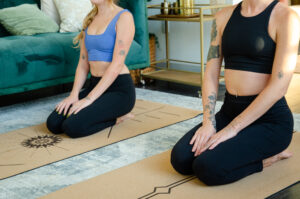
Breathing technique to improve your yoga practice

Restorative Yoga Stretches
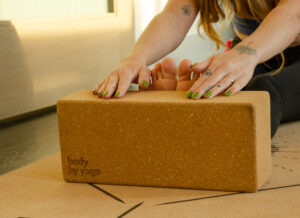
Benefits of yoga before bed
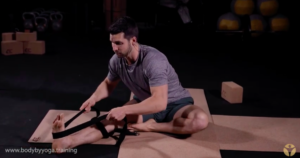
Good Stretch For Lower Back And Hamstrings
Related Articles
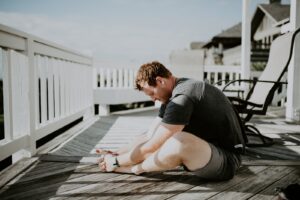
Yoga For Men
Yoga has become more and more mainstream over the years. While it wasn’t a very common practice just a few decades ago, today most people
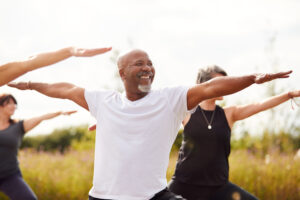
How to Get Started With Yoga for Men Over 50
Did you know that yoga can be incredibly helpful for aging? Are you aware that yoga is great for all ages, and that you can
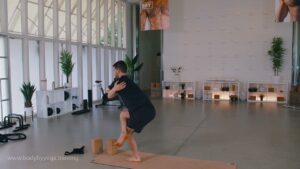
How To Do Eagle Pose
(pharmacy home delivery) (cheapest pharmacy for prescriptions without insurance)
